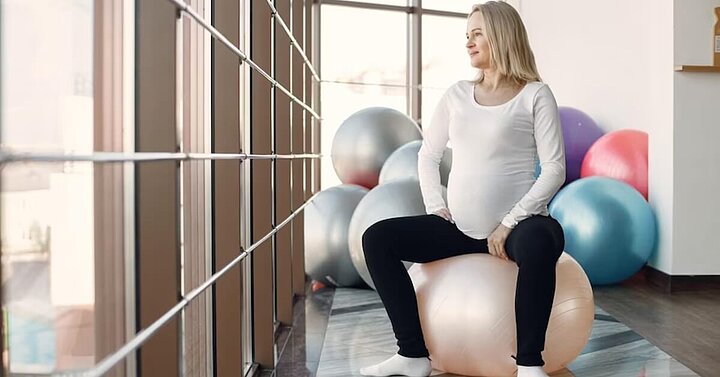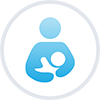Exercises to help build strength for birth
Wellbeing | | Charlie Launder
When it comes to birth, there is no way of knowing how it is going to go, so it’s best to be prepared and feeling ready for anything. You can use your time in pregnancy to build strength in your body, to put yourself in the best possible position going into birth. These are five exercises that I recommend adding into your workouts to prepare for labour and delivery.
1. Squats
The squat is an exercise that involves almost every muscle group apart from our arms. It activates our back and core muscles when done correctly, and of course strengthens our glutes, quads, calves, and helps us to build strength and stability in our lower body. Not only will this will help you feel strong carrying your baby around during pregnancy, but many women also use the squat in labour and often when actually giving birth.
It is a fantastic position as it really opens up the pelvis and allows baby’s head to get into the right position, so it’s well worth working on your squats so your legs don’t tire out too quickly when they’re needed the most!
2. Hip circles on a Swiss ball
Towards the end of your pregnancy your midwife may suggest sitting on your birthing ball whenever you can, as it’s a great way to encourage baby to nestle into the correct position. Using your time on the ball to do some hip circles in a figure of eight is a great idea because it not only helps to alleviate some of the discomfort that you can experience in your pelvis and hips, but it will keep your pelvis moving and in a forward and open position, which is ideal for birth.
3. Pelvic floor exercises
If you are planning for a vaginal birth, your pelvic floor will play a huge part in the pushing out of your baby. When we think of pelvic floor, we automatically think of Kegels, which involves working with our breath to engage and relax the pelvic floor, but actually there is so much more to our pelvic floor than a breathing exercise. We need to learn how to contract our pelvic floor and also to relax it which is just as important, but we need to learn how to do this whilst moving.
Learning how to use our pelvic floor muscles during everyday movements is key, as let’s be honest there is not many times that you are going to be lying or sitting down and worried about leaking; it’s usually when you’re up and moving around. If you are able to contract and relax your pelvic floor in a lunge, or a step up or a squat for example then you are going to be putting your body in a hugely beneficial position going into your birth and further on into motherhood.
4. Diaphragmatic breathing
I know this doesn’t sound like an exercise, but trust me it is! We need to make sure our deep core muscles are staying activated throughout pregnancy to help support the lower back as our posture changes and our pelvis tilts with the growing bump, but also to aid us in birth and recovery. Try kneeling in an all fours position, with a big inhale relax all of your abdominal muscles to allow your bump to hang as low as it can, and then exhale and gently engage your core muscles bringing your bump up and in toward your belly button. You can do this in a seated or kneeling position too but make sure to take it slow and steady and really allow your bump to fully relax before you engage it again. Once you have this breathing down you can try it in other exercises in the box position.
5. Childs pose
Not only is this a lovely relaxing position to be in, it is also a common labouring position too so a brilliant one to get used to being in. It helps to lengthen the pelvic floor muscles and to ease discomfort in the lower back which is very common in pregnancy.
For these same reasons its a wonderful stretch to get into post birth too as it takes all the pressure off the lower back which can often become tight after long hours sitting in a slumped position feeding or cuddling your baby.


